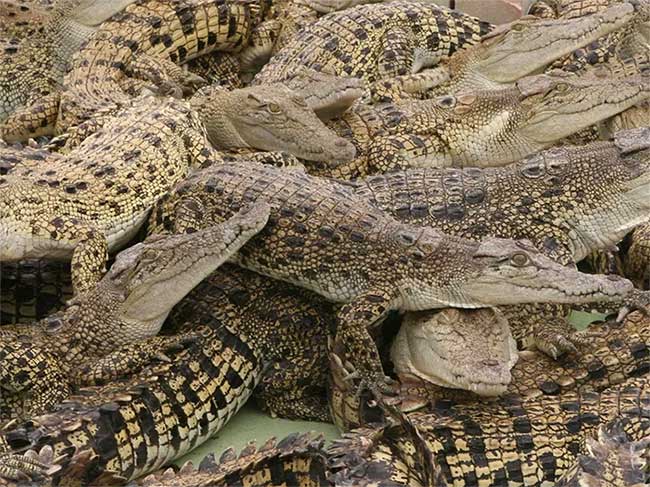A Low-Flying Helicopter Sends Crocodiles “Into a Frenzy” Mistakenly Interpreted as a Mating Signal.
Typically, we assume that the whirring sound of helicopter blades would be disturbing to nearby animals, but for the reptiles residing at a crocodile farm, a low-flying helicopter has become a signal for mating season.
John Lever, the owner of the Koorana Crocodile Farm in Queensland, Australia, stated: “All the large males stand up, roar, and after the helicopter leaves, they mate like crazy.”
While it’s unclear what it is about the Chinook helicopter that excites the crocodiles, experts suggest they may have mistaken the sound of the aircraft for an approaching storm. In fact, storms are known to agitate crocodiles.

Dozens of saltwater crocodiles in pens at the Johnstone River crocodile farm, Queensland, Australia, in 2006. (Photo: Reuters/Russell Boyce).
Crocodiles Seeking Mates
October and November mark springtime in Australia, coinciding with the breeding season for the region’s saltwater crocodiles. This period also brings the rainy season, characterized by numerous storms accompanied by thunder and lightning across the continent.
Reptile researcher Mark O’Shea from the University of Wolverhampton, England, explains that typically, breeding is a seasonal activity because crocodiles tend to choose the best time to lay eggs in burrows or nests.
Breeding during the rainy season means that females will lay eggs a few weeks later. At this time, the weather will be less severe, and the eggs will face fewer risks of being washed away by floodwaters.
Thus, this time of year is ideal, and the sounds and vibrations from the helicopter may have simulated a storm, signaling to male crocodiles that it was time to act. The movement of the Chinook helicopter’s rotors may also cause atmospheric pressure changes similar to those of a storm.
Alternatively, O’Shea posits that the crocodiles might have mistaken the helicopter’s roar for the growls and tail splashes of other males.


















































